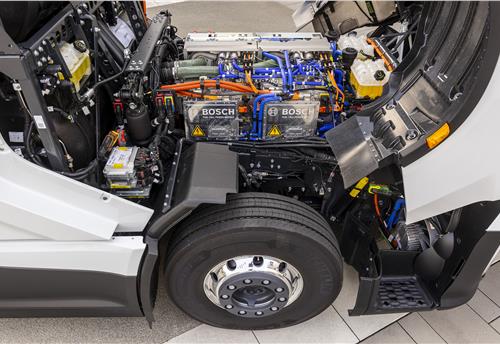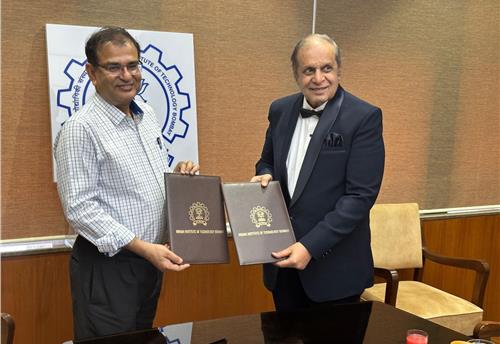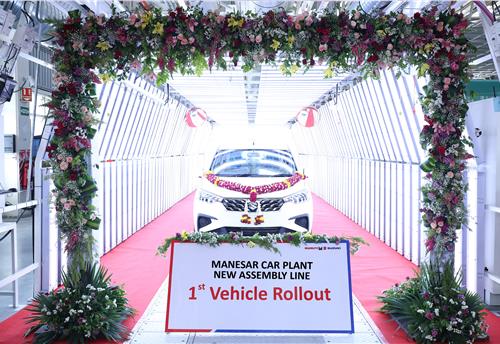PVs and 2Ws to drive component industry growth: ICRA
Increase in commodity prices that has been pressurising industry's profitability but has been offset by strong revenue growth, with most auto ancillaries witnessing sequential improvement in operating margins.
The domestic auto component industry will grow by nine to 11 percent in FY2018 and will see a growth of 10-12 percent CAGR over the long term, says ratings agency ICRA. The forecast takes into consideration higher commodity prices but is optimistic on healthy volume support driven by industry performance.
In FY2017, the domestic auto component industry's revenue was around Rs 290,000 crore and is expected to grow by nine to 11 percent during FY2018, which will be mainly driven by the robust growth expectations in the domestic passenger vehicle (PV) and two-wheeler (2W) segments, says ICRA.
The resarch report says that after considering the increasing content per vehicle due to various technological advancements as well as regulatory measures (emission, safety regulations), the growth in the auto component industry will be relatively higher than the underlying growth in the automotive industry in the medium to long term.
The survey undertook a study of 48 auto ancillaries, which constitute around 25 percent of the component industry’s turnover. It found that the revenue growth of the companies was about 13.5 percent in revenue terms during Q2 FY2018. The same was driven by higher realisation in the backdrop of steady increase in commodity prices, wherein volume growth was in the mid-single digit. Overall, during H1FY2018, the sample space grew by 9.5 percent which was in line with its estimate of nine to 11 percent growth for FY2018.
Subrata Ray, senior VP and Group Head, Corporate Sector ratings, ICRA, said: “Domestic OEMs, especially in the two-wheeler and passenger vehicle industry which together constitute about two-third of overall domestic OEM demand, are expected to grow at a healthy pace in FY2018. Moreover, expected recovery in rural income will provide an upside for sub-segments like LCVs, motorcycles and tractors. Though PV exports indicate some aberration and thereby some bearing on production volumes, domestic PV demand remains strong during Q2 FY2018.”
“Exports-related aberration is likely to abate during the coming quarters and will be more than offset by robust domestic demand. As regards M&HCVs, their Q1 FY2018 slowdown in demand affected ancillaries’ performance, but strong double-digit growth during Q2 FY2018 has resulted in superior performance. Going forward, a pickup in infrastructure activity will further drive growth in construction and mining equipment as well as the tipper segment,” added Ray.
The ICRA report says that exports, which account for 28 percent of industry’s demand, with the USA and Europe making up for 60 percent of the total chunk, witnessed a decline. This was sharper in the US M&HCV market during H2 CY2015 and CY2016. However, the trend seems somewhat reversed now with incremental order inflow for class-8 trucks being encouraging over the last six months. As for European markets, new PV and CV registration numbers have witnessed marginal growth year-to-date CY2017 and their growth outlook remains tepid over the near to medium term. Exports will also be affected by rupee appreciation.
Commodity prices have been rising over the last 4-5 quarters, thereby pressurising industry profitability. Amongst all ancillaries, tyre manufacturers were the worst impacted due to sharp volatility in rubber prices which has peaked around Rs 160 per kg in Q4 FY2017, though it subsequently moderated to around Rs 130 per kg level at present. Easing rubber prices has helped operating margins to recover during Q2FY2018 after a five year low level during Q1 FY2018.
Other commodities like steel and lead also remained at elevated levels and continued to pressurise profitability. Nevertheless, strong revenue growth during Q2 FY2018 has offset some impact of commodity price pressure. Though overall OPM continues to remain lower than last year’s level, most auto ancillaries have witnessed sequential improvement in operating margins.
ICRA expects that the industry-wide credit profile trends will remain stable that will be supported by robust demand from the OEM segment in the near term. Additionally, supported by healthy cash accruals, gearing as well as coverage indicators for the industry have improved considerably over the past two years. However, given surplus capacities, the industry has been on a consolidation mode over the last two years, taking steps towards deleveraging their balance sheet.
As select OEMs explore inorganic growth opportunities in India as well as in overseas market to support growth, along with diversifying its clientele and product portfolio, some incremental leverage may be expected. Overall ancillaries are concentrated on moving up the value chain to mitigate profitability and competitive pressure in the intensely competitive industry.
Incremental investments by auto ancillaries are primarily towards new order/platform-related requirement or debottlenecking of existing capacity. A few have started investing in view for BS VI (in 2020), CAFE norms and electric vehicles in 2030.
“Over the medium to long term, growth in the auto component industry will be higher than the underlying automotive industry growth, given the increasing localisation by OEMs, higher component content per vehicle and rising exports from India. In line with ICRA’s previous forecast, OPMs dipped below 15 percent level during FY2017 and it is likely to moderate further in FY2018. Nevertheless, we maintain our medium-term margin outlook of ~13 percent to 13.5 percent as compared to earlier sub-12 percent level witnessed prior to FY2012 owing to a richer product mix and rising revenues from the profitable aftermarket segment. We maintain our 10-12 percent long term (5 year) CAGR expectation for Indian auto component industry,” concluded Ray.
RELATED ARTICLES
Bosch hydrogen engine tech-powered truck to be on Indian roads this year
The global supplier of technology and services is betting big on both electromobility and hydrogen. While announcing the...
IIT Bombay inaugurates Arun Firodia Research Floor
IIT Bombay, one of India’s top technical and research institutions, honours Kinetic Group chairman Dr Arun Firodia, one ...
Maruti Suzuki expands capacity at Manesar plant by additional 100,000 units
New assembly line at Plant A expands total manufacturing capacity at the Manesar plants to 900,000 units per annum. Alon...





 By Autocar Pro News Desk
By Autocar Pro News Desk
 07 Dec 2017
07 Dec 2017
 3968 Views
3968 Views









